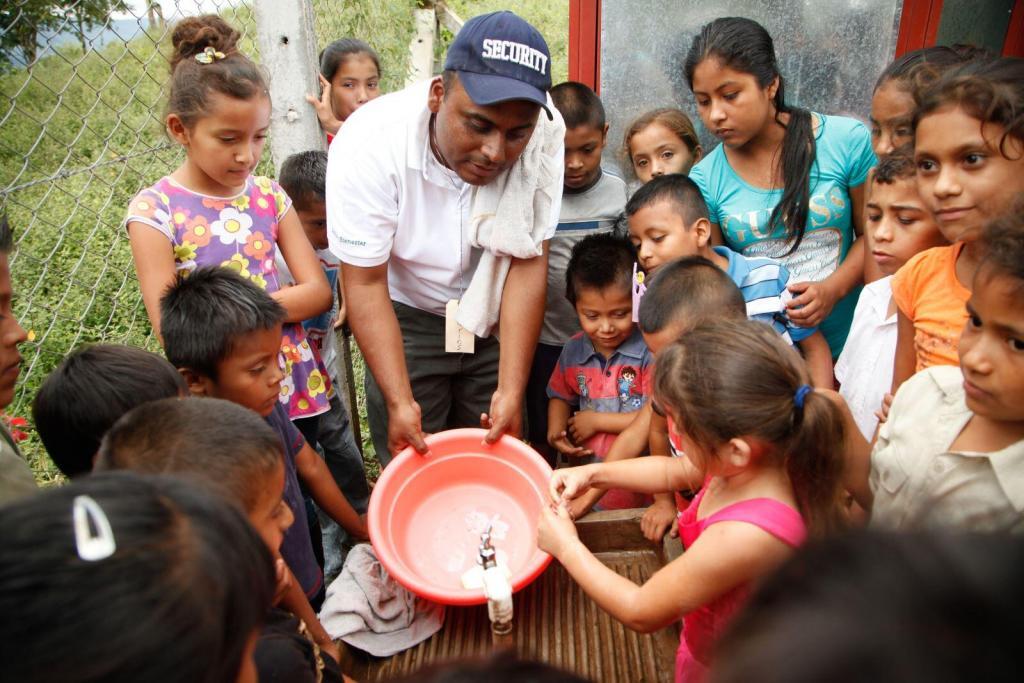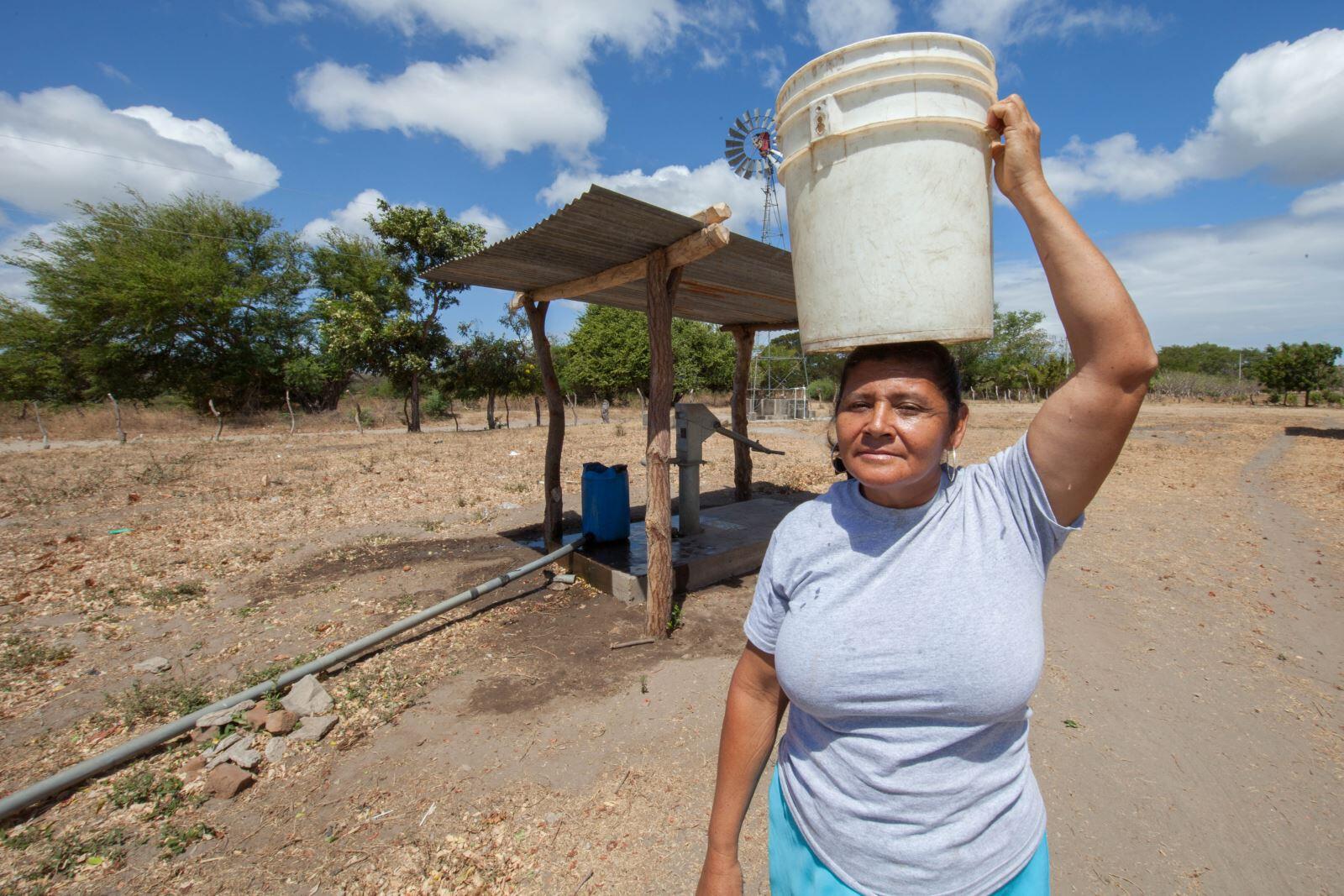This is the second installment in “How to Build a Village” our blog series that digs into the nitty gritty of how we partner with rural poor families to build sustainable villages that break the cycle of poverty. You can read the first installment on Community Design here.
– – – – – – – – – – – –
Press a button, turn a knob: out of every faucet you touch comes clean, potable water. However, this is not the reality for families in impoverished rural regions of Central America. There are no water fountains, no water purification or treatment facilities, no pipes that pump clean water to your house. You might be forced to walk several miles to reach the nearest water point, yet scarcity and distance aren’t even the most pressing issues.
Oftentimes your only source of water is from the nearest stream – the same stream where you wash your clothes and dishes, irrigate your crops and collect water to drink, sharing your water supply with dogs and other animals.
Migdalia carries water to her home about 100 yards away, a ritual performed several times per day.
ROLLING THE DICE
Drinking water in rural Central America is a game of Russian roulette, each drop possibly containing toxic parasites and viruses. “We had diarrhea and respiratory infections in the community,” says Migdalia, a 50-year-old mother and grandmother, speaking of the early days in 2009 when 25 families formed the Agros village of Luz del Mañana in Nicaragua.
Contaminated water not only threatens the daily well-being of those who contract these viruses, but also – more insidiously – their potential. For children, Migdalia explains,
“The problem is that if there is diarrhea, there is malnutrition, and if [a child has] parasites, there is anemia, lack of growth and lack of achievement in school.”
Drip by drip, water-borne threats like parasites take residence in the belly of a child, competing with the body for essential micronutrients like iron. Without any purified water source the resulting anemia and worse forms of malnutrition drain a child’s energy and curb normal brain development.
That’s why, with the help of training from Agros technicians and experts from the Nicaraguan Ministry of Health’s rural outreach team (a relationship also facilitated by Agros), Migdalia is one of the three community volunteers in the village who lead a campaign to educate the community on the health risks of contaminated water and teach a few simple methods of purification.

Did you know you can make chlorine with salt and water? Using this simple device, Migdalia and the water committee run a measured mix of salt and water through six times. It’s a simple, easily replicable way to produce chlorine for water purification.
Chlorination is one of these methods, purifying water for drinking as well as cleaning fruits and vegetables. The water chlorination committee uses a special machine, provided by Agros, to mix water with iodized salt to create chlorine. Then a small amount of the chlorine is added to water to kill any bacteria or parasites, resulting in water purification levels safe for drinking.
THIS IS WHAT SUSTAINABLE CHANGE LOOKS LIKE
Chlorinating the water makes sense when you’ve been educated and seen proof of its health benefits, but at first the only difference villagers noticed was the time it took and the strange taste. People like Franseca from the Agros community of San José had survived on contaminated drinking water their whole lives.
“I didn’t believe the water was contaminated before,” she says. This all changed when an Agros technician came and showed her what was swimming in her drinking water.
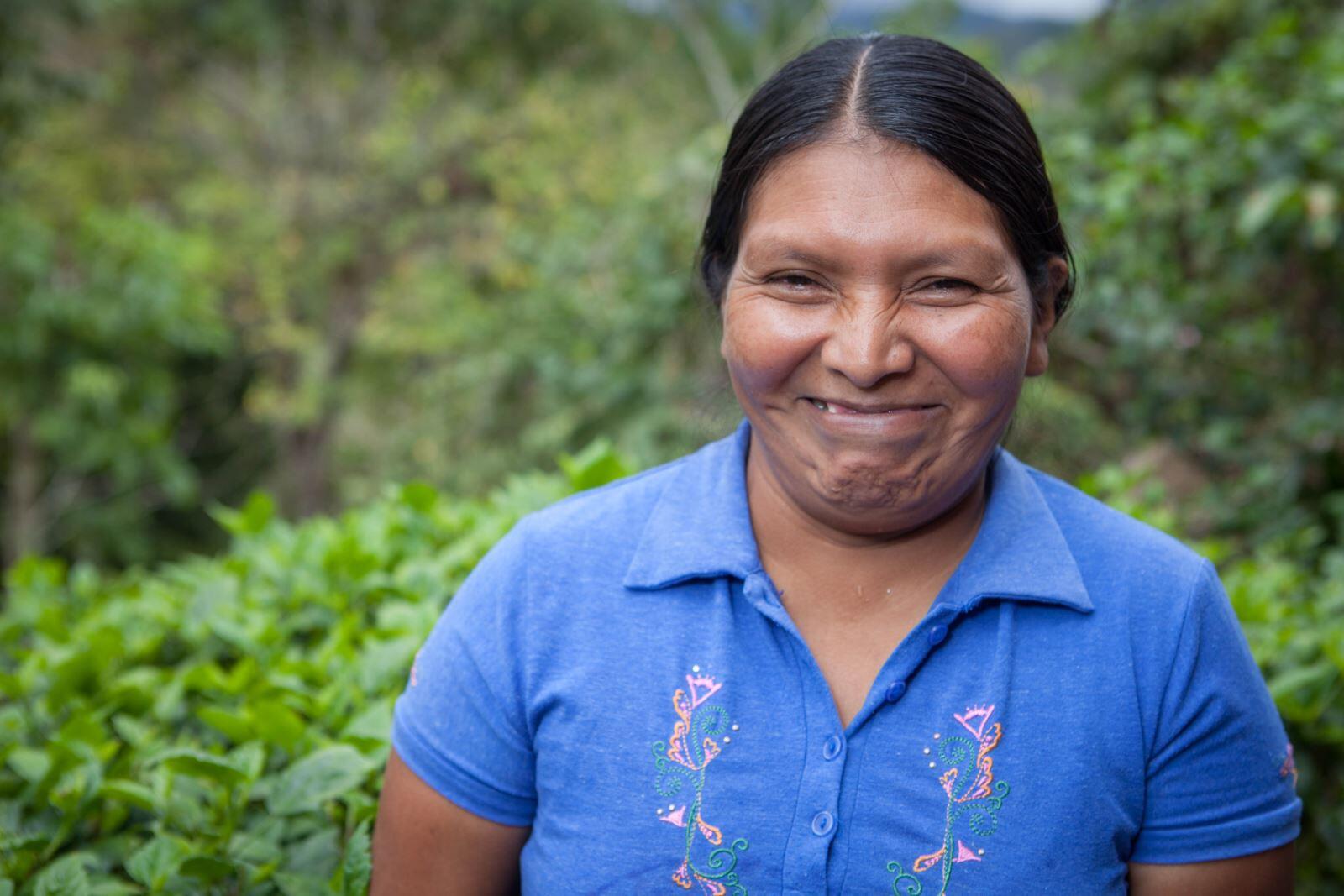
Franseca plays the crucial role of trusted intermediary in her community, taking what she learns from her monthly meetings with a Ministry of Health rural outreach coordinator and sharing it with her neighbors and friends in San José.
Then she saw how the chlorinated water improved her children’s health and quickly became an advocate, urging families to look past the unpleasant taste.
“I have seen the difference it makes. In other families where they don’t chlorinate the water, their children are sick with diarrhea and vomit much more”.
While access to clean water is vital, these efforts are fruitless without involvement and cooperation from the community. Access by itself covers the wound of waterborne illness like a Band-Aid. But it’s only a short term fix if, as often happens when you’re trying to affect behavioral change with incremental and longer-term results, the community reverts back to what is familiar and not obviously harmful (in this case, dirty and potentially contaminated water).
It is only when the members of the community are well educated about the gravity of a problem (ideally from a trusted source like Franseca, a mother in the village) and bought in collectively to the solution that sustainable long-term change can occur, stitching the wound allowing it to heal completely.
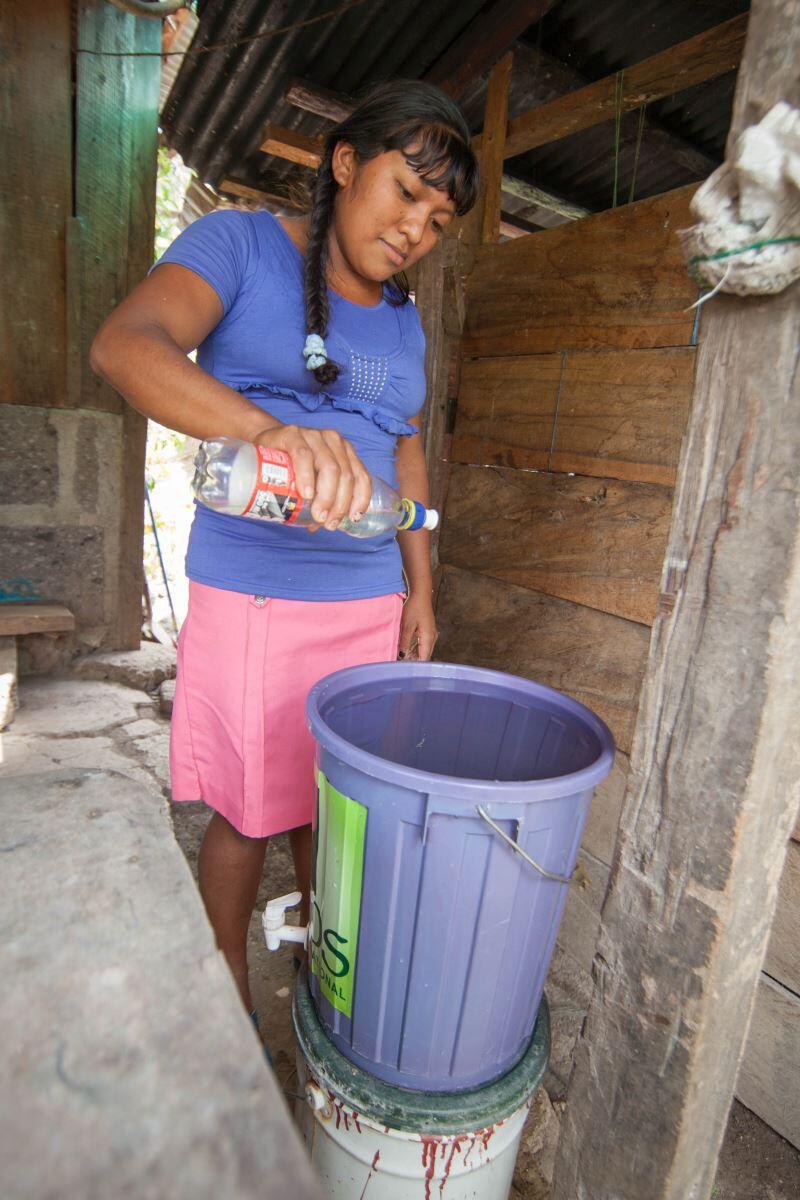
Franseca’s daughter has been designated the house chlorinator, responsible for adding the right proportion of chlorine to their family’s drinking and washing supply.
TAILOR-MADE SOLUTIONS
The solution looks different in each village. For example, the Agros community of Tierra Nueva in the northern Matagalpa region of Nicaragua houses 150 families and due to the scarcity of water in the region, Agros and community leaders had to put their heads together and get creative.
Agros worked with an engineering team at Gonzalez Suarez to access a natural spring higher up the mountain. They employed members of the community to build a pipeline stretching over 4 miles long to provide safe, clean drinking water for Tierra Nueva as well as hundreds of families outside the community that lie in its path. This also removed the need for any water purification system.

Children of Tierra Nueva getting their first look at clean water, a combined effort from Agros and community members providing water to sustain the community for the next 20 years.
SERVANT LEADERSHIP
Migdalia and Franseca are the true heroes of the story, not only for their commitment in providing access to clean water, but additionally their efforts in educating the community on its importance.
In Luz del Mañana, where Migdalia is active in leading clean water and water purification trainings, cases of diarrhea and other illnesses from contaminated water have reduced significantly both in frequency and severity.
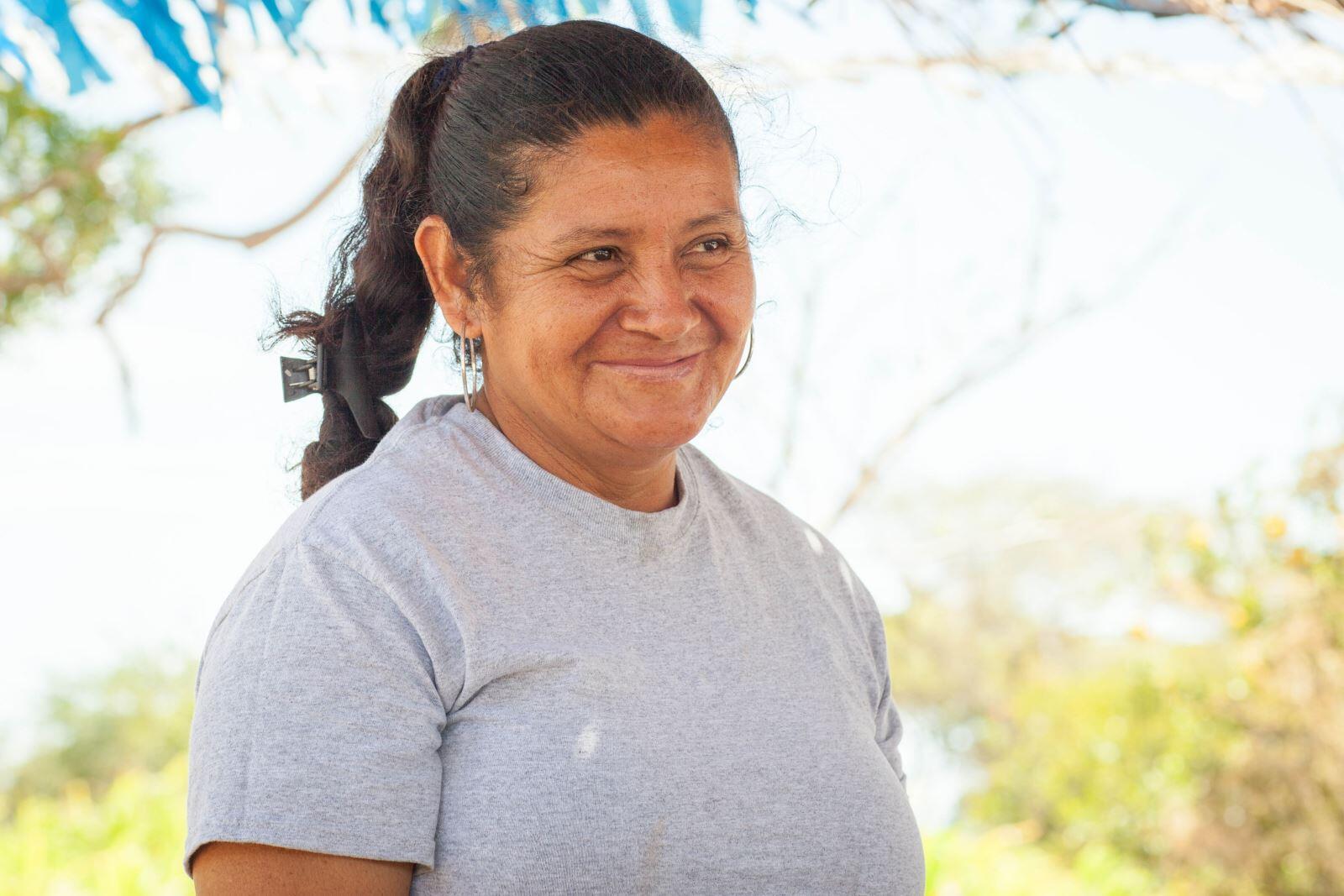
Migdalia sees her work as a volunteer water advocate as a way to follow Jesus’s example of service.
In addition to providing clean water, Migdalia organizes a “health work day” on the 28th of each month to clean up garbage in the village, teach children basic personal and oral hygiene, and continually remind the community of the importance of purifying their water.
She looks at her position in the community not as a job, but a mission driven by faith:
“Jesus Christ came to serve, not to be served, so that is what we, as Christians, should do. That is our job”.
Clean water and sanitation act as a foundation for a healthy community, and with health comes familial stability and economic growth. Kids stay in school, adults are more productive in the fields and businesses that provide for their family, and with each wheel and gear chugging along energetically, the community’s development picks up speed.
Migdalia knows that she can’t eradicate every illness in Luz – but that doesn’t stop her from striving to improve her community’s well-being.
“Maybe we can’t help with many things, but with the little that we have and what we have learned, we have to share it with others.”
Then we let God handle the rest.
 Paul Gehrig
Paul Gehrig
Marketing and Communications Intern


